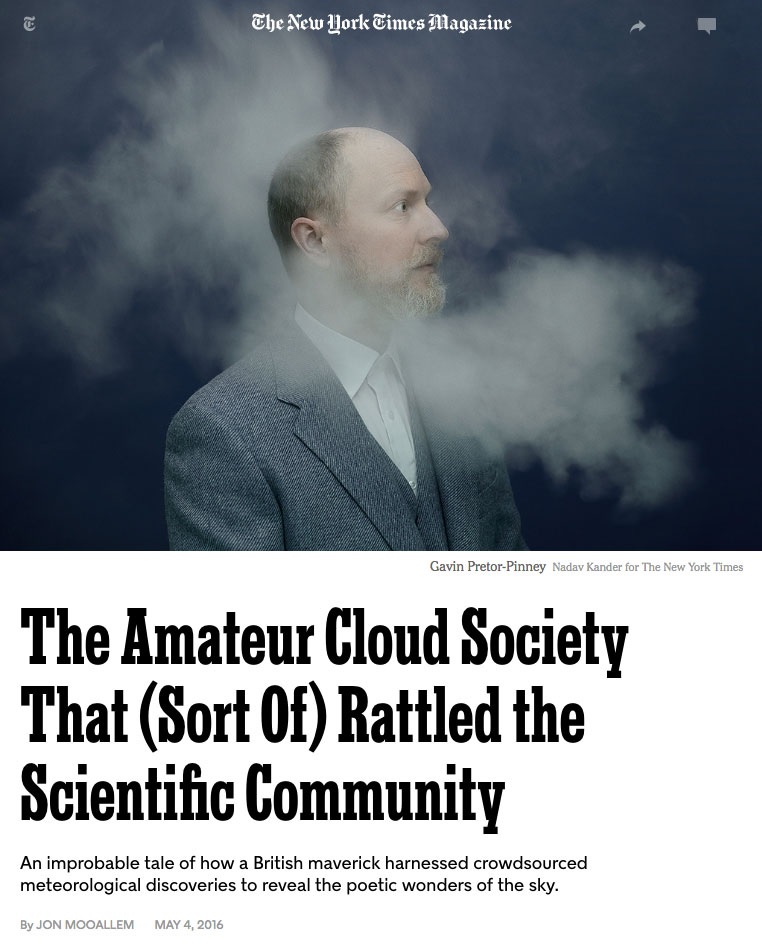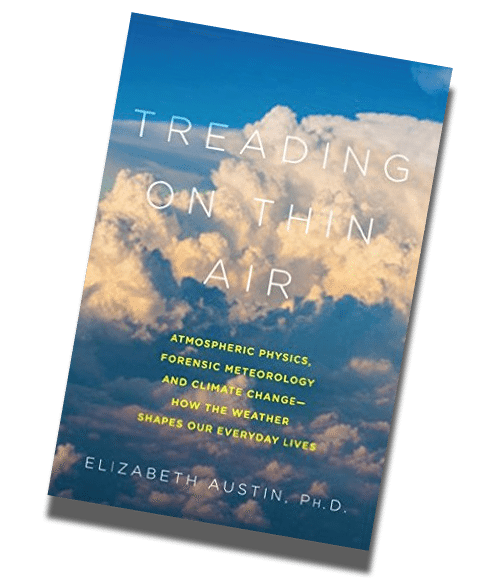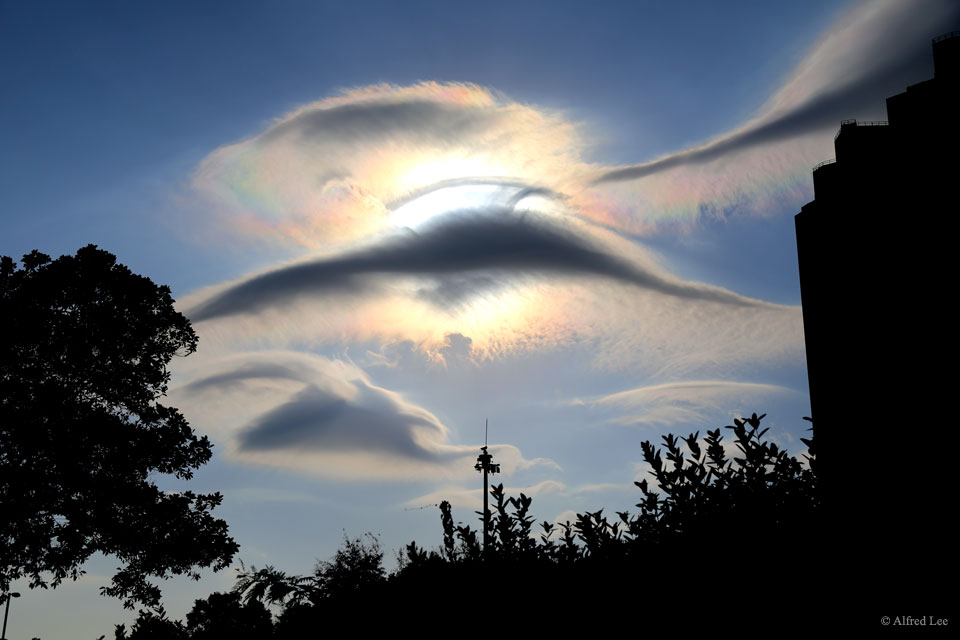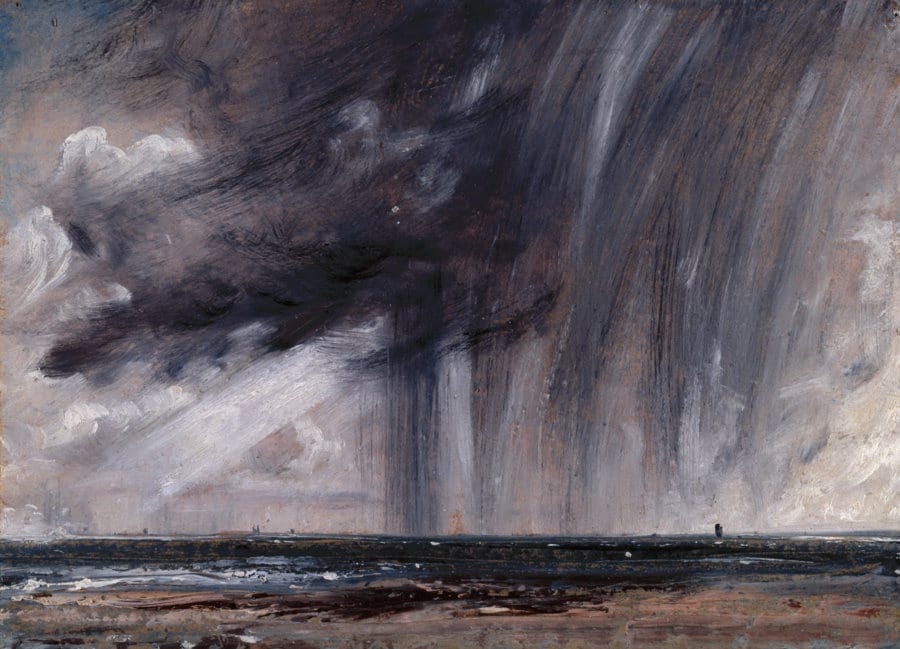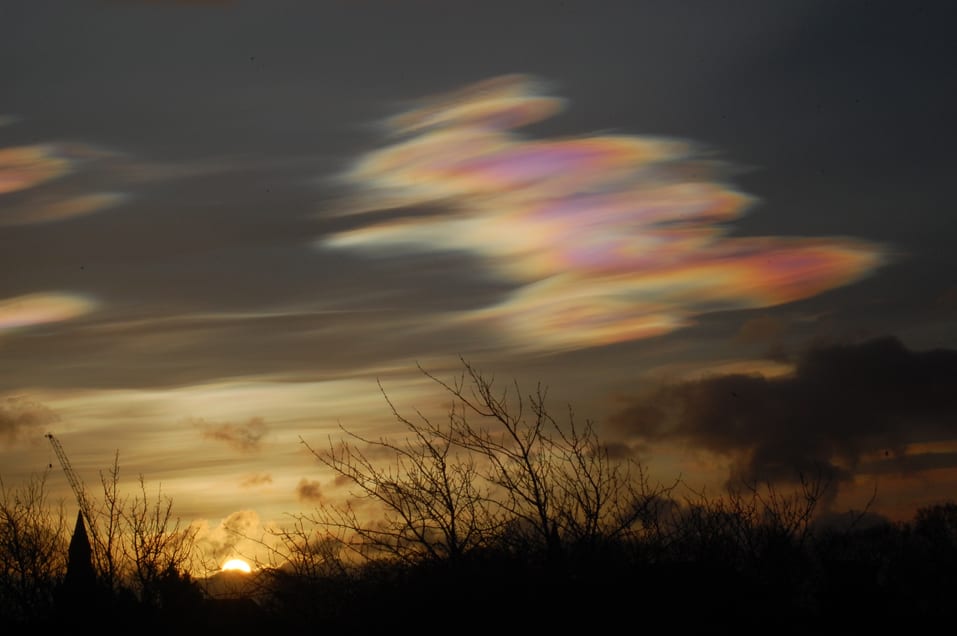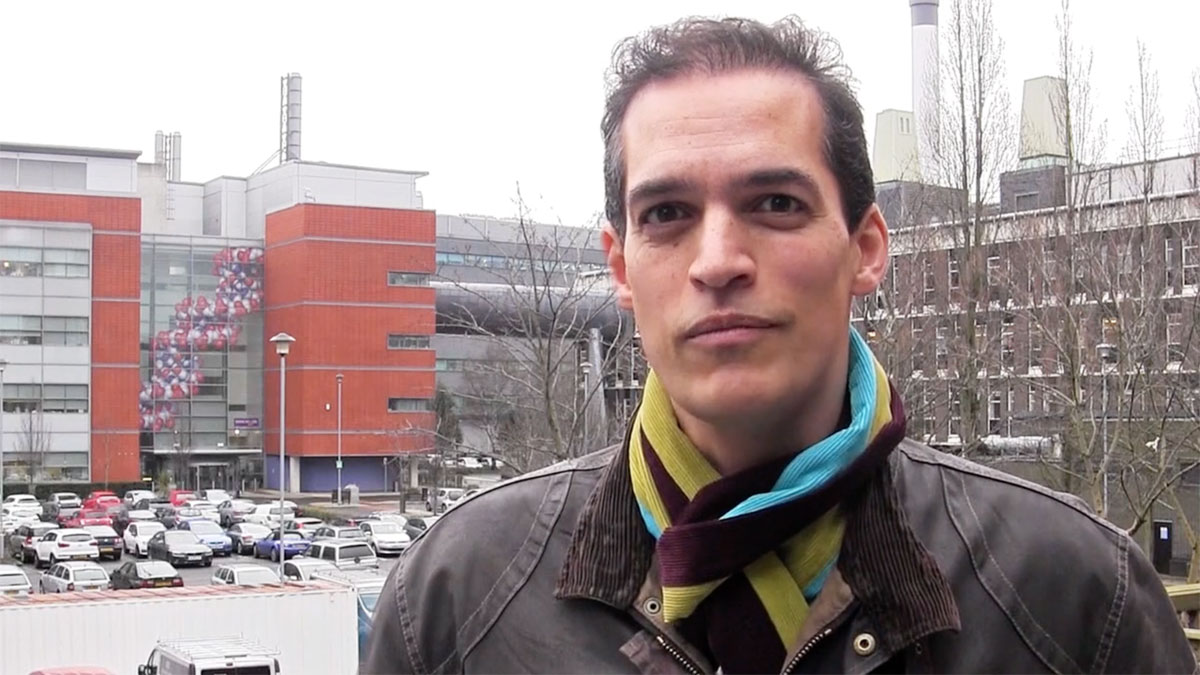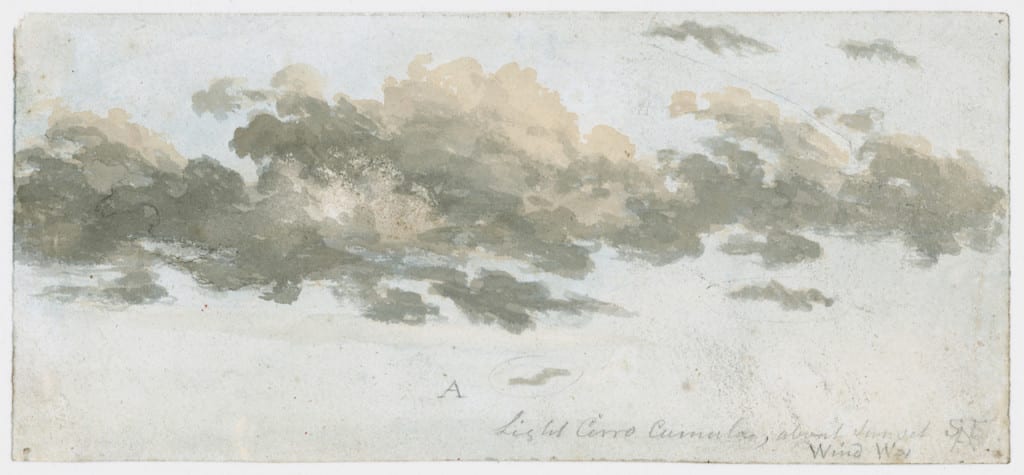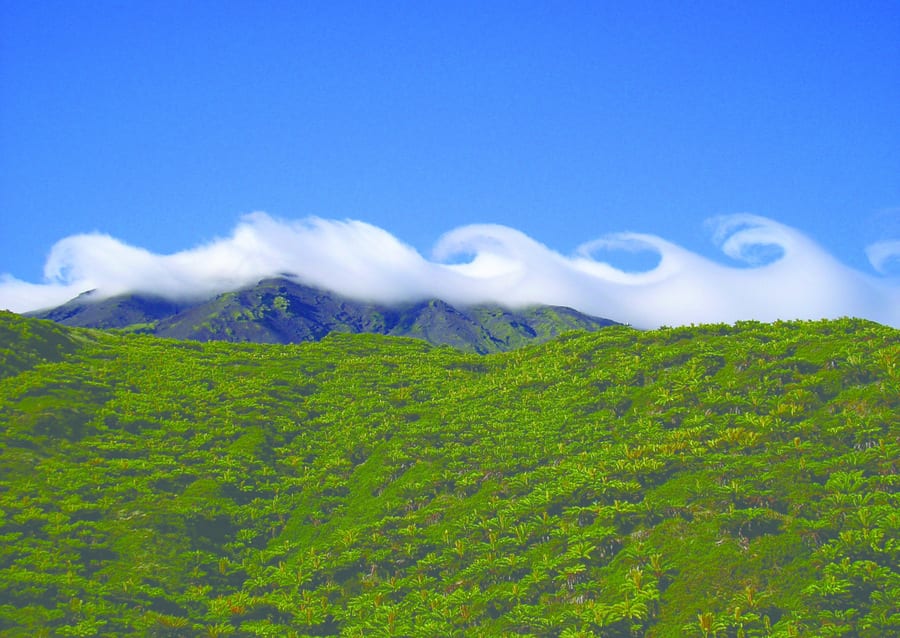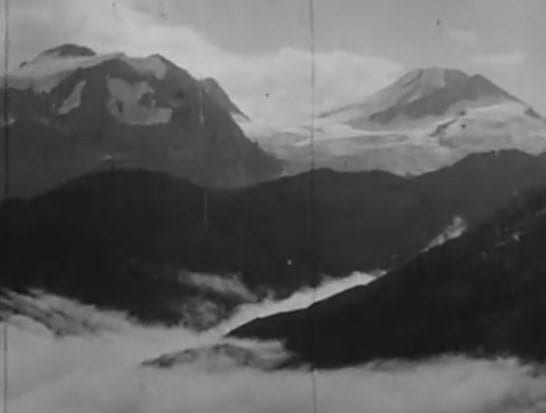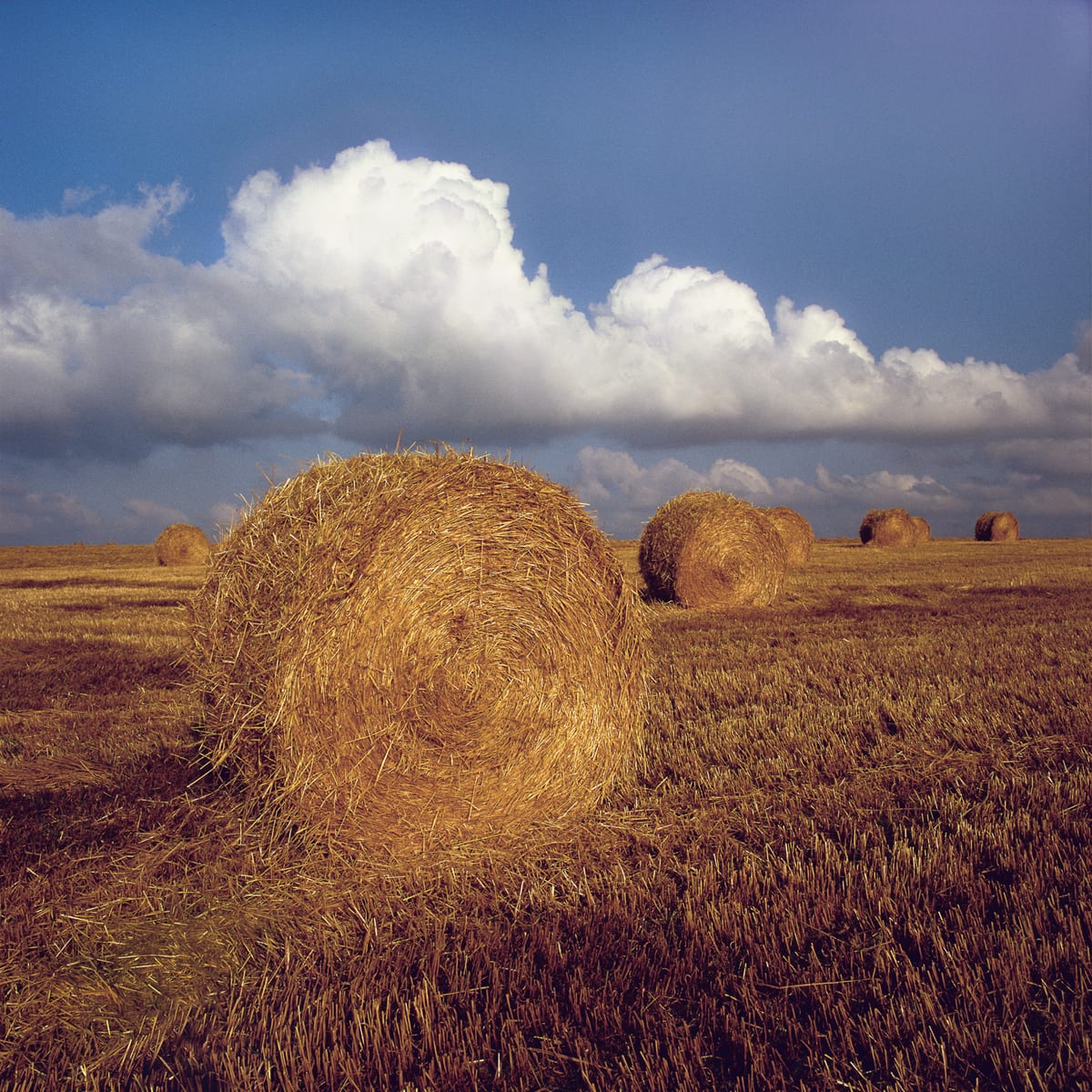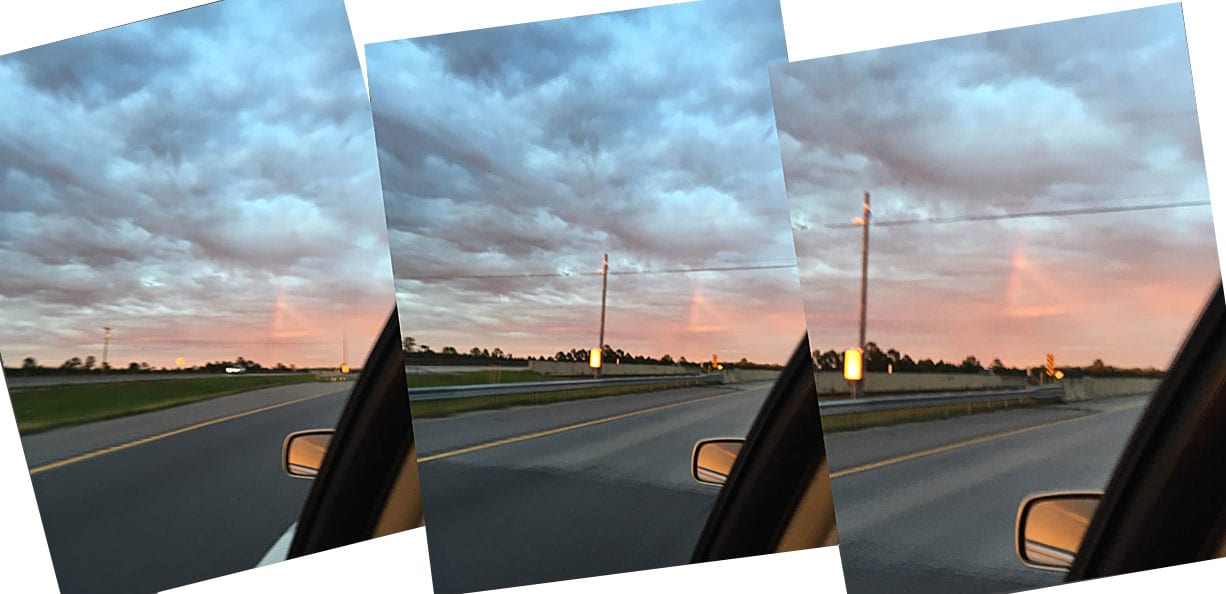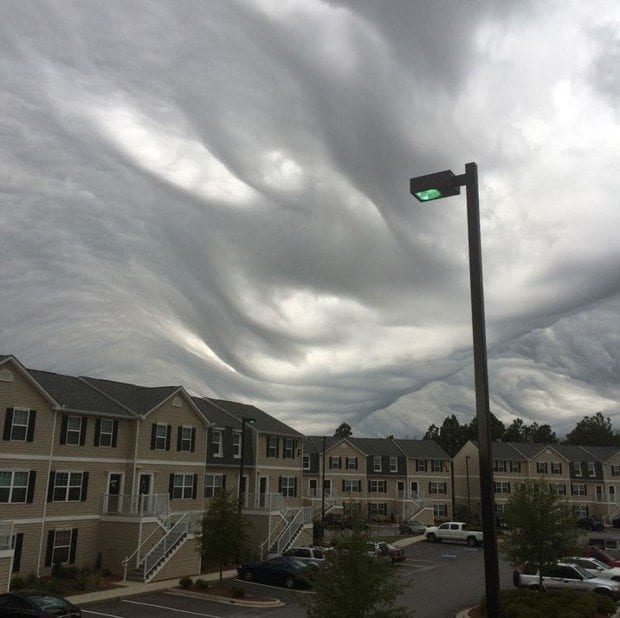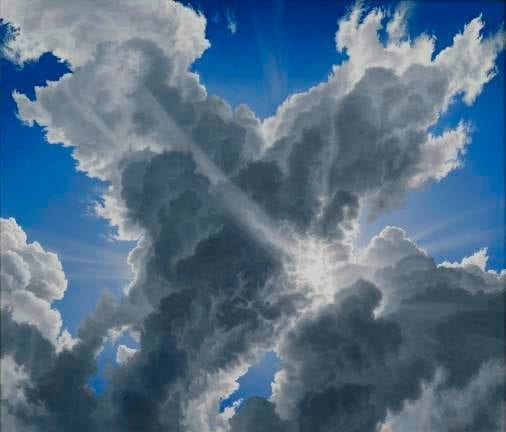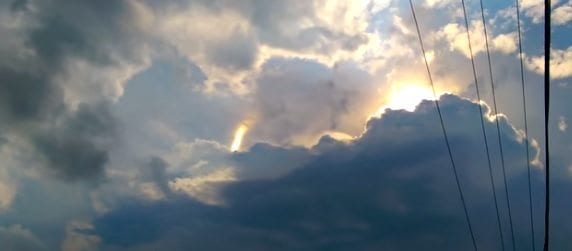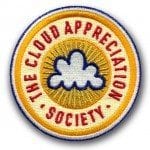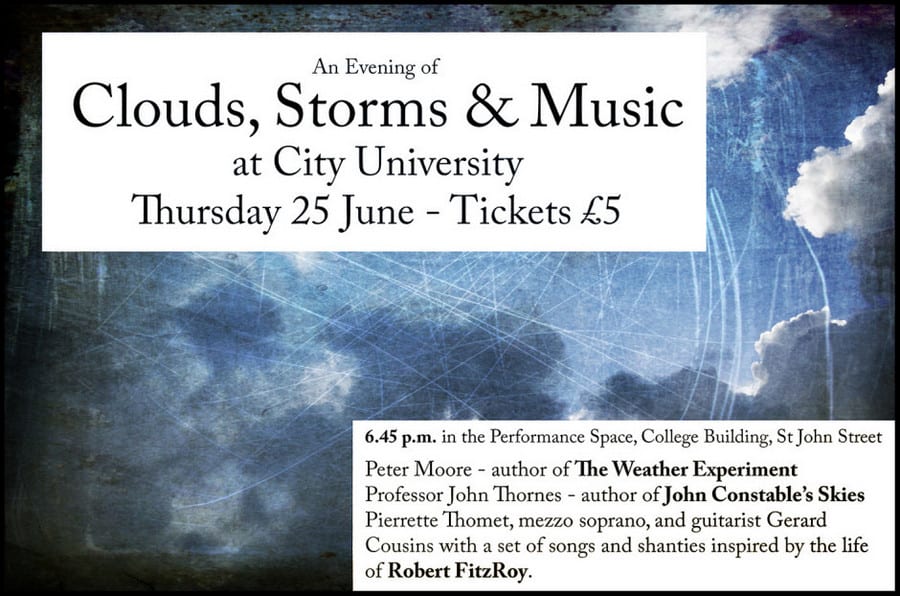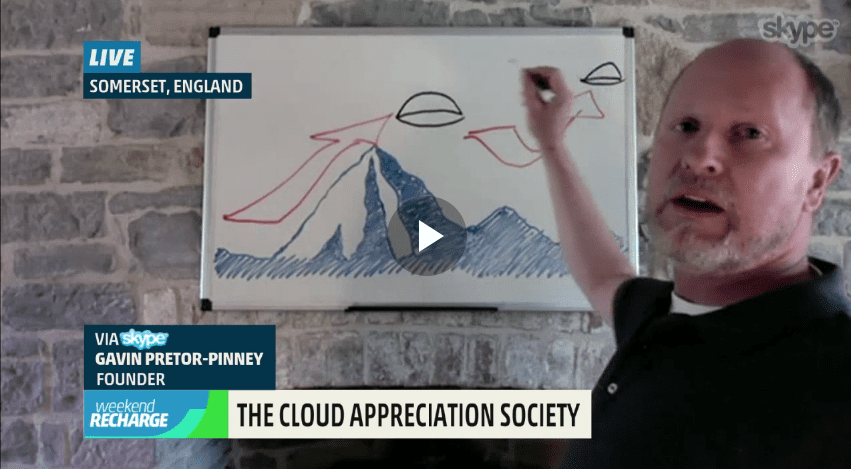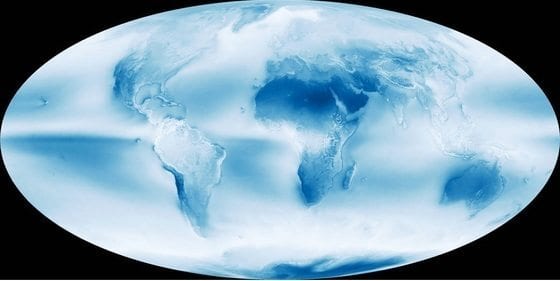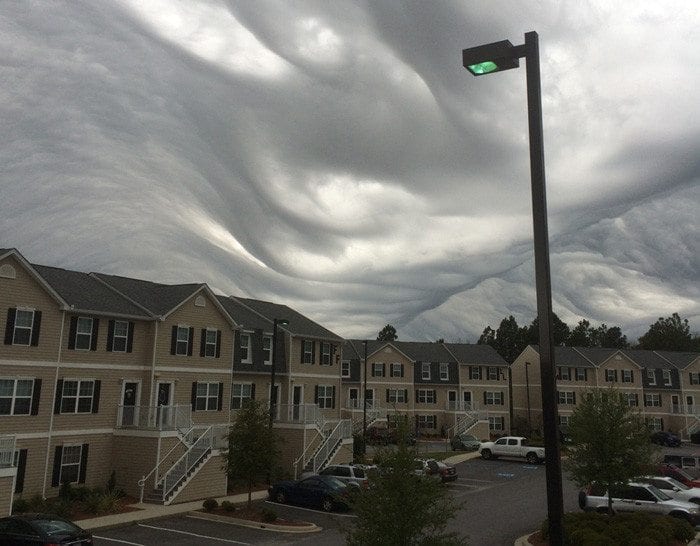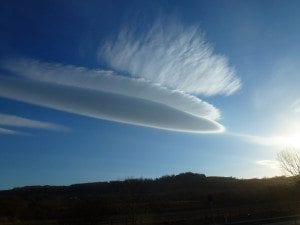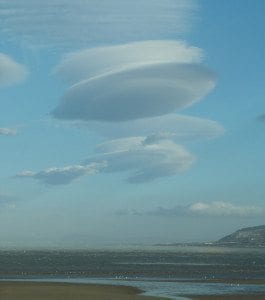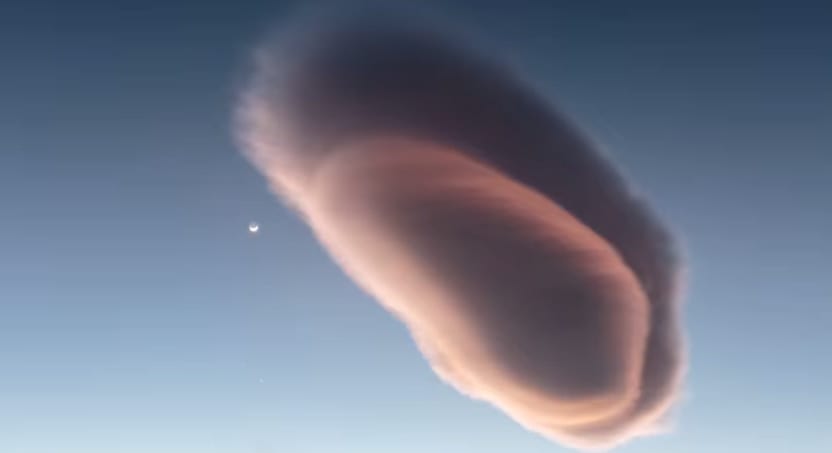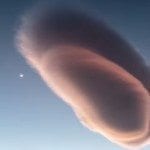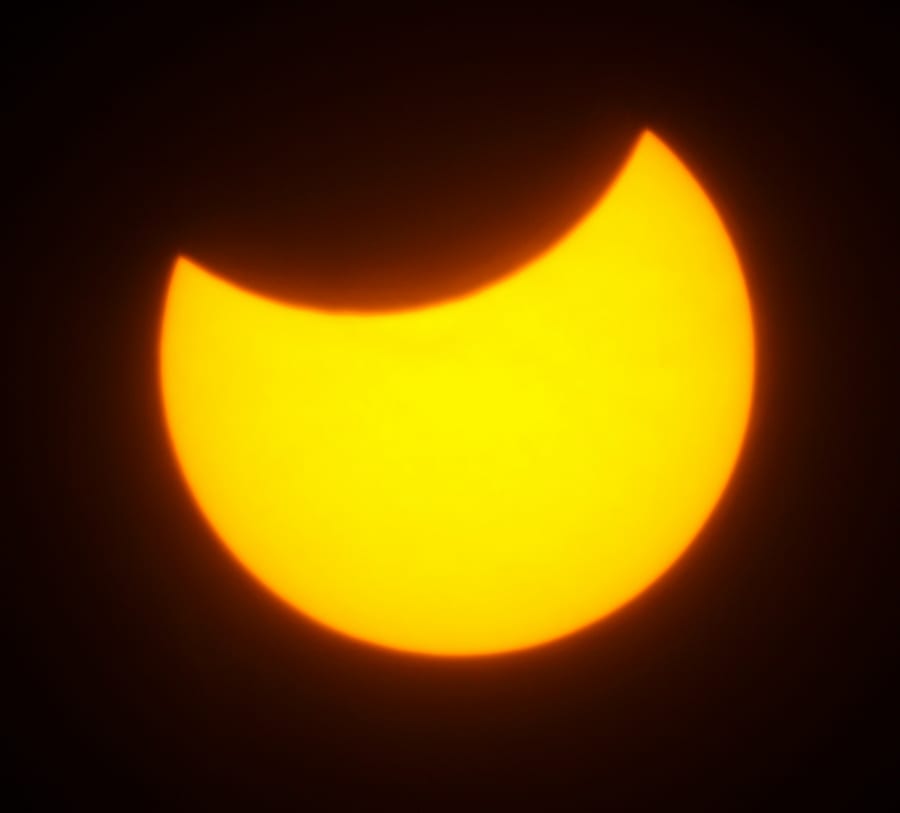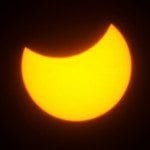Our beautiful new tees are now available in the Cloud Shop. They were printed for us here in the UK by the eco-award-winning Rapanui Factory, onto 100% organic cotton that was made ethically in a wind-powered factory in India with a fully traceable supply chain. Find out more….
Category: Attention All Cloudspotters
You can’t look around when you’re looking up, so we’ve had a look around for you.
If you have cloud news that you think we should include here, please email it to us at: hello@cloudappreciationsociety.org.
“Songs and the Sky” is an exhibition of art and music currently showing at Bruce Silverstein Gallery in New York until 18th June 2016.
The exhibition title derives from Alfred Stieglitz’s historic series, Songs of the Sky, the artist’s original title for the Equivalents (1925-1937). Similar to notes in a musical score, these images of cloud patterns form an abstract, universal visual language equivalent to the artist’s inner state, emotion, and ideas. This exhibition is a rare opportunity to view such a large collection of Equivalents.
Please visit the Bruce Silverstein Gallery for more information
The New York Times Magazine recently published an informative – and at times, moving – feature by Jon Mooallem about the Cloud Appreciation Society. Read the online version to discover how the Society came about and to learn of our efforts to have a new type of cloud accepted by the World Meteorological Organisation. Bear in mind, however, that the story ends in tears…
‘Cloudy with a Chance of Joy’ by Society founder Gavin Pretor-Pinney…
The University of Minnesota’s Weisman Art Museum is currently running an exhibition all about clouds. It’s called “Clouds…Temporarily Visible.” This image is from an installation that’s part of that exhibit. The cloud is composed of lightbulbs varying in size and opacity. Visitors can stroll under the cloud and pull the strings to change the luminosity of the cloud.
The exhibition runs until Sunday, 22nd May, and you can see more about it on the Weisman Art Museum website.
This month, as we do every month, we had a live chat with The Weather Channel in the US, to tell them about our Cloud of the Month. For April, it’s Melyssa Wright’s beautiful photograph of mamma clouds over Linton-on-Ouse, North Yorkshire, UK.
We have given the Cloud Appreciation Society website a new layout and design, and are now in testing phase. There will be quite a few bugs, which we will be sorting out over the coming days. We would love to hear in the comments below if you’ve come across anything that seems broken. It will probably take you a little while to get used to where things are now, but we hope the development will be an improvement on the previous design. We hope also that it paves the way for the site to work better on mobile devices.
There is plenty more to do on the Photo Gallery. You can currently filter for cloud types by clicking the menu icon in the top right to reveal the cloud-type filter terms, but the gallery search functionality is still not in place.
Do let us know what you think of the new, cleaner look!
Dr Elizabeth Austin of Weather Extreme Ltd’s new book Treading On Thin Air is part memoir and reveals how the weather and climate are intimately tied to our daily lives. In her book, Dr. Austin will demystify climate change, revealing what is really happening with our climate and why, whether it is El Niño, tornadoes, floods or hurricanes. Weather and society are at its most fascinating at extremes, and as Dr. Austin is one of a handful of forensic meteorologists around the globe, she has been called upon to investigate plane crashes, murders, wildfires, avalanches, even bombing cases. Drawing upon her rich experiences, Austin’s Treading on Thin Air promises to be an enlightening and informative journey through the wild word of weather.
“Weather is an inescapable part of our daily lives, from the nuances of air travel to the breadth of human history. Our past, present, and future is intimately rooted is weather and climate”.
For more information and to pre-order Dr Austin’s book, please visit the Treading On Thin Air website.
The Met Office’s Mostly Weather podcast recently released an episode on clouds entitled “A pig with six legs and other clouds”. Starting from the basics – what is a cloud? How do they form? – the team then move on to learn about the difference between cloud and rain droplets, as well whether or not fog should be considered as a cloud.
Listen to the podcast and read more about it on their website.
Thanks to Society member, Rob Blair, for drawing our attention to this interesting cloud formation that was featured as the NASA Astronomy Picture of the Day on 2nd March. A full description can be seen on their website.
We were pleased to learn that Private Eye, the British satirical magazine, recently published a story to publicise the sorry deterioration of the historic home of Luke Howard. In 1802, this 19th Century pharmacist and lifelong lover of the sky devised the naming system for clouds that we still use today. His legacy for the world of meteorology and far beyond cannot be underestimated.
Thanks to Cloud Appreciation Society member, Joan Morrad, for telling us that The Lightbox Gallery in Woking is currently showing an exhibition of John Constable’s paintings concentrating on his dipictions of clouds.
The exhibition is running from 13th February to 8th May and full details can be found on The Lightbox Gallery website.
Cloudspotter, Amaro Alves, sent us information about this cloud photography competition. The deadline to enter is 15 April 2016 and the full details can be found on the Clouds In Movement website.
Cloudspotters across the UK and Ireland have witnessed fantastic displays of rare ‘nacreous’ clouds over the first few days of February. The formations are also known as ‘mother of pearl clouds’ due to their beautiful bands of colour, which appear as the cloud’s ice crystals diffract the sunlight, separating it into its different wavelengths.
Cloudy with a Chance of Pain is a UK based study which uses a smartphone app to investigate if the weather affects the symptoms of pain. If you have arthritis or chronic pain, live in the UK and have a smartphone, you can take part.
For more information and to take part in the study please visit their website.
This article from Hyperallergic.com explains how Luke Howard’s classification of clouds in 1802 and their subsequent study influenced artists from John Constable to J. M. W. Turner. It includes sketches from the ‘Essay on the modifications of clouds’ by Luke Howard (1865 edition) as well as links to other studies and scientific exhibitions.
The Royal Meteorological Society (RMetS) and the Royal Photographic Society (RPS) have recently launched their joint photo competition to award the Weather Photographer of the Year.
There are two broad categories for this competition – 16 and under, and over 16s. The RMetS and RPS are looking for the best photographs from around the world that depict weather in its widest sense.
This could range from weather phenomena such as clouds, lightning, rain, fog or snow through to the impact of weather on humans, cities and the natural landscape. They are looking for stunning images that might be dramatic in what they depict or because of the story they tell of the impact of weather.
The selectors will include a mix of meteorologists, photographers and photo editors who will look for work that combines photographic skill with meteorological observation. Peter Gibbs, BBC weather presenter and RMetS Fellow, is confirmed as one of the judges for the competition. Peter started his weather career in Antarctica, but is now a familiar face as one of the Met Office team at the BBC Weather Centre.
He said “Weather presenting is all about storytelling, so I’ll be looking for a picture that tells a tale, taking the viewer to that moment”.
Weather Photographer of the Year and the winners from each category will be announced at the RMetS Amateur Meteorologists’ Conference at the University of Reading on 10-11th September 2016 (http://www.rmets.org/amateur2016).
Applications can be submitted via the competition website www.weather-photo.org. The deadline for the competition is 26th May 2016.
We were recently contacted by Society member, Tim Oxton, who told us about a film he saw entitled “Clouds of Sils Maria”. The film focuses on a playwright who has written a play called “The Maloja Snake”, a cloud bank that winds its way through the Alpine pass like a river.
Charlie Waite, world-renowned landscape photographer and CAS Member 39,333, tells us why the sky is one of the most important things to consider when creating a successful landscape photograph.
Cloud Appreciation Society founder, Gavin Pretor-Pinney, recently collaborated with Rodale’s Organic Life to write an article about different cloud types including the “King of Clouds” shown here, roll clouds and mamma along with several others.
The article includes wonderful images and descriptions written by Gavin and can be seen in full on Rodale’s Organic Life website.
This strange triangle in the sky was filmed by the Planche family in Mississippi, US. They were mystified by the peculiar red lines of light that they observed, and which have since become known as “The Mississippi Triangle”.
Our friends at the World Meteorological Organisation have asked for help from our members. They’re working on a new edition of the official reference book on the classification of clouds, the International Cloud Atlas, and they are currently gathering photographs to include. We’ve helped out with our competition to find a photograph of the new ‘asperitas’ cloud but the WMO are also looking for good examples of a range of different cloud types. If you like the sound of your photograph becoming an international cloud reference image, you can sign up and find our more on the WMO Image Submission page.
[vc_row row_type=”row” use_row_as_full_screen_section=”no” type=”full_width” text_align=”left” css_animation=””][vc_column][vc_column_text]
Many congratulations to Gary McArthur of Burnie, Tasmania, Australia!
[/vc_column_text][/vc_column][/vc_row][vc_row row_type=”row” use_row_as_full_screen_section=”no” type=”full_width” text_align=”left” css_animation=””][vc_column width=”1/2″][vc_column_text]The winner of the Cloud Appreciation Society Asperitas Competition was announced at our Escape to the Clouds event at the Royal Geographical Society in London on Saturday 26 September 2016. Gary McArthur’s photograph of the asperitas cloud was chosen from the shortlist (see below) by a task team brought together by the World Meteorological Organisation to update their International Cloud Atlas. Many congratulations to Gary. His photograph is due to be used as the asperitas reference image in the forthcoming edition of the International Cloud Atlas. He also wins our ‘ultimate cloudspotter’s kit’.
George Anderson, one of the UK members of the WMO task team, joined us live at our event via Skype to tell us the team’s decision. the Since 2008, we have argued that this dramatic and distinctive cloud formation deserves a classification of its own. Now The World Meteorological Organisation have announced that they’re planning to make it the first new cloud classification since 1951.
George Anderson explained the thinking behind their choice of winner. “We were looking for a photograph that most faithfully represents the cloud feature,” he told our conference, “and that meant that we weren’t necessarily looking for the most dramatic image. This photograph will be used as the reference image to train future meteorologists and weather observers in identifying the cloud feature.”[/vc_column_text][/vc_column][vc_column width=”1/2″][vc_single_image image=”82596″ img_size=”large” add_caption=”yes” alignment=”center” qode_css_animation=””][/vc_column][/vc_row][vc_row row_type=”row” use_row_as_full_screen_section=”no” type=”full_width” text_align=”left” css_animation=””][vc_column][vc_separator type=”normal” border_style=”” down=”25px”][vc_column_text]
Here are the rest of the shortlisted entries
We are very grateful to all the photographers who entered the competition. The WMO team said that there were some really great entries and that the choice was not at all easy. Each of the shortlisted entries was a fantastic example of an asperitas cloud.[/vc_column_text][/vc_column][/vc_row][vc_row row_type=”row” use_row_as_full_screen_section=”no” type=”full_width” text_align=”left” css_animation=””][vc_column][vc_empty_space][/vc_column][/vc_row][vc_row row_type=”row” use_row_as_full_screen_section=”no” type=”full_width” text_align=”left” css_animation=””][vc_column][vc_gallery type=”image_grid” images=”82377,82379,81938,49711,82384,82387,81596″ img_size=”large” column_number=”3″ grayscale=”no”][/vc_column][/vc_row]
On Monday, 5th October, 7pm at The Tobacco Factory, Bristol Cloud Appreciation Society founder, Gavin Pretor-Pinney, will be amongst the speakers at the launch of the hit event series 5×15 in Bristol.
“5 speakers. 15 minutes each. No scripts. True stories of passion, obsession and adventure for the incurably curious…”
Please visit their website for full details.
John Metcalf of CityLab.com recently posted an article about “asperitas,” the first new cloud type identified since 1951 and which the WMO will include in its revised 2016 International Cloud Atlas. The WMO have asked the Cloud Appreciation Society to provide a photograph if this new cloud type and we have recently launched a competition to find the best image with the winner to be announced at the Escape to the Clouds Conference in September.
John’s article has some wonderful images and you can read it in full here.
Later this month, we are holding our first major gathering on Saturday 26 September at the Royal Geographical Society in London. Marking ten years of the Society, it will be a celebration of the Science, Art and Culture of the Sky, and it’s going to be a truly international affair, with cloudspotters joining us from the US, Poland, Finland, Sweden, Germany, France, Switzerland and elsewhere.
All six of our amazing speakers are ready to inspire and inform, and we have a host of delightful ‘shorts’ taking place between talks. As a taster, here is the award-winning musician Lisa Knapp’s ‘Shipping Song’, which she will be performing for us on the day.
 Moatti Masters|Contemporary is pleased to present a major
Moatti Masters|Contemporary is pleased to present a major
exhibition of works by the Italian landscape painter Alberto
Bertoldi at their gallery premises on Mount Street in Mayfair,
London. The exhibition brings together a recent collection of
works alongside special commissions from the artist’s Cloud
series, being shown for the first time in the UK. Alberto Bertoldi
(b. 1955) began staging award-wining solo shows across Italy in
the early 1990’s, before going on to exhibit worldwide at galleries
and shows including Daegu in South Korea, Galerie
Zur.Hofstatt in Basel, Hermitage Gallery in Texas, USA, and
Society Redaktionfest in Vienna. In 2012 he exhibited at the 54TH
Venice Biennale, under the curatorship of Vittorio Sgarbi. He
has been awarded numerous prizes throughout his career
including the Purchase Award and Solo Artist Award from Forni
Gallery. Alberto Bertoldi’s Cloud works represent a
contemporary exploration of the Classical traditions of “plein
air” painting, capturing the beauty of painting natural light in all
its power and exploring the human obsession with cloud
formations. This is the inaugural show for Moatti
Masters|Contemporary – a new venture by Emmanuel Moatti
combining his 30 years career in old masters with his passion for
collecting contemporary art, to open a gallery space connecting
the two disciplines and work with living fine artists who draw
inspiration from the art-historical language, in order to create a
new modernity.
The exhibition runs from 1st to 30th October at Moatti Masters|Contemporary, 23 Mount Street, London, W1K 2RP – for more details, please see their website Moatti Masters|Contemporary
Back in 2011 we wrote a news item about the strange lights that can sometimes be seen dancing in the sky above storm clouds – Dancing Clouds. We saw in a recent post by the Bad Astronomer at Slate Magazine that these amazing light effects, caused by the ice crystals above the storm cloud aligning with the shifting electrostatic fields caused by lightening strikes below, were given a name back in 1971.
In a letter to Nature Magazine about a sighting in 1970, this amazing light effect was named “A Crown Flash”.
Cloud Appreciation Society member, Mick Garton from Edinburgh in the UK contacted us recently with an innovative idea for what to do with your car tax disc holder now that it no longer has to be displayed on your windscreen in the UK. He has slipped in one of the CAS embroidered patches. As you can see from the photograph he sent us, it fits perfectly and is much more interesting and eye-catching!
On Thursday, 25th June, City University London will be holding an event, “The Weather Experiment: Clouds, Storms and Music” in conjunction with WAM (Weather Art and Music). Join author Peter Moore and singer Pierrette Thomet for an evening of art, music and weather. They will examine Robert FitzRoy’s forecasting experiment, John Constable’s famous cloud sketches and there will be music inspired by weather and the sea. There will be a book signing of Peter Moore’s The Weather Experiment afterwards.
A further participant at the event will be Professor of Applied Meteorology, John Thornes, who is also one of the speakers at the Cloud Appreciation Society Conference which is being held on 26th September 2015 at The Royal Geographical Society, London.
Tuesday 16 June 2015, 6.30pm to 7.20pm
Berrick Saul Building, University of York
The BBC series Operation Cloud Lab: Secrets of the Skies brought together a team of scientists who travelled across the US in the world’s largest airship. Along the way they discovered that pollution can affect hurricane strength and they even managed to weigh a cloud. Join Jim McQuaid of the University of Leeds as he reveals some of the amazing sights that ended up on the cutting room floor.
Free tickets available at yorkfestivalofideas.com or via York Festival of Ideas.
As part of our monthly segment on The Weather Channel, Society founder Gavin Pretor-Pinney stuck up a whiteboard and drew a diagram to show how June’s Cloud of the Month forms.
Cloud enthusiast, Michelle Martin, recently posted a link on our Facebook page from The Weather Network. The image shows an average of 13 years of cloud cover data, from July 2002 to April 2015 with the data being collected by NASA’s Aqua satellite, using its Moderate Resolution Imaging Spectroradiometer (MODIS) instrument (the darker the colour, the less cloudy it is).
The full article can be seen on The Weather Network website
Cloud enthusiast, Jan McIntyre, visited Rochester recently and whilst exploring the village her attention was caught by the decoration of a building and plaster plaque announcing “erected at the sole charge and expense of Sir Cloudsley Shovel in 1706”. Curious about the spelling of dear Cloudy’s name, she began looking on the internet and discovered a British heavy rock band called Admiral Sir Cloudesley Shovell, “named after a 17th century English naval commander” – obviously some variety in the spelling of his name!
Since her visit she has done further research and found The Ship and Shovell pub in Craven Passage, Charing Cross and was told by the Rochester Museum that there were a couple of pubs so-named. The pub in Charing Cross, although it is one, is on both sides of the passage and Jan tells us that it is lovely and cosy and inside there is another piece about the gentleman with his name spelt “Clowdisley”. Further, when looking for directions from Camden to Highbury, she noticed there was a Cloudsley Road along with a Street, Place and Square, all named after Cloudsley in Islington.
Monday 30 March saw a fantastic display of asperatus clouds over Georgia and North Carolina, US. The photographs below on the Society gallery were taken by LeeAnna Tatum of The Claxton Enterprise newspaper. At the bottom of the page, you can see time-lapse video of the formation.
On the 7th March a particularly dramatic display of lenticularis clouds formed over North Wales. They were of the form known as ‘pile d’assiettes’. This is the French for a pile of plates and refers to lenticular clouds that have the distinctive stacked appearance. You can see examples of the formations sent in to our photo gallery below.
Cloud enthusiast, Bernard L Reymond, recently sent us the link to NASA’s Cloud of the Day for 2nd March. This is an image of a Lenticular cloud, the Moon, Mars and Venus and was taken by Nuno Serrão. Once you have read all the information onthe NASA website about this photograph, you might also enjoy watching the associated video.
A solar eclipse will be visible from the UK on the morning of 20th March 2015. Although primarily an astronomical event, a solar eclipse can also affect the weather*. If you will have access to measurements of air temperatures, wind speeds, or can safely observe the cloud amount by eye, the Department of Meteorology at the University of Reading invites you to take part in NEWEx, the National Eclipse Weather Experiment, a citizen science project to collect weather data during the solar eclipse for detailed analysis. Full instructions for submitting data are given at www.met.reading.ac.uk. Some of the results from this endeavour are likely be discussed as part of a BBC Stargazing Live event on the day of the eclipse, and will also be analysed more formally.
*A brief summary of some of the anticipated eclipse-related weather changes is given here: How do solar eclipses affect the weather
The UAE is offering grants for research programmes into enhancing the yield from rain clouds. Anyone interested in applying for a grant would need to supply an online proposal by 16th March 2015.
For full details please visit the UAE Research Program for Rain Enhancement Science website.




